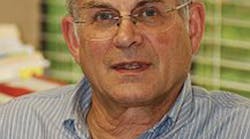Public Transportation and the New Era of Information Technology
In May 2010, more than a million daily commuters traveling the Toronto Transit system were entertained by a unique art exhibition titled “What’s The Hype?” on Toronto-based Onestop’s network of digital screens on Toronto Transit Commission (TTC) subway platforms. It was an official public installation for the CONTACT photography festival, and the only venue to feature a “digital” art exhibit, said the company.
In September, those same 270 screens in 50 subways stations were home for the 4th annual Toronto Urban Film Festival (TUFF).
Then, in October, the screens promoted an online voting game called Mayor Munch that Onestop construed to have fun with the upcoming Toronto municipal election while also encouraging stronger voter participation.
Of course, there are more common and more universal applications of digital signage content in mass transit than the innovative applications above. Among them, Onestop cites the following:
- Display of real-time vehicle arrival and departure information
- Emergency alerts and content over-ride for timely notification
- Promote loyalty programs, new services and other messages
- Infotainment (news, sports, weather and other entertaining content)
- Revenue creation through advertising and content programs
Such is the variety of content that makes digital signage an integral part of the fabric of public transportation today and that will continue to drive its application, whether at a bus stop or in a subway station, inside or outside a bus or inside a subway train.
In a comprehensive study of digital place-based media viewership, Arbitron estimates that about 138 million U.S. residents aged 12 or older visit public transportation venues or use public transportation every month. Furthermore, the research firm estimates that approximately 20 million of those people indicated that they viewed a digital place-based video screen during that same time period.
As a result, one can expect transportation to represent a major sector for digital place-based advertising, and it is, ranking No. 3 out of 16 vertical markets in three of the past five quarters, according to the Digital Signage Expo Quarterly Business Barometer. Not surprisingly, transportation ranked equally high among digital signage growth sectors, appearing among the top five in four of the past five quarters.
While the sheer number of people has always made public transportation attractive to advertisers wanting to reach a certain demographic, digital signage plays a much greater role in mass transit than delivering advertising, though advertising continues to play a prominent role in underwriting the cost of deploying and operating a digital signage system. Digital signage may take the form of self-service ticketing and information kiosks, directional signage and real-time schedule displays. It also may display news, weather, time and provide a variety of entertaining or otherwise engaging content, as the above examples illustrate.
Moreover, as technology evolves, the ways in which relevant content is delivered to the screens also will evolve. A case in point is Destination Shuttle Service (DSS) at Los Angeles International Airport (LAX).
Passengers riding DSS airport shuttle buses, which provide transportation for more than 2.5 million people annually both to and from LAX and the surrounding hotels, may appreciate the information provided on the digital signage inside the buses without realizing the extent to which it’s tailored to their distinct needs, much less the technology that populates the screens with contextually relevant information. Quite simply, departing passengers get one type of information; arriving passengers get another.
In reality, however, it’s not quite so simple. Using Omnivex Moxie software and Microsoft Windows 7 location-based services, GPS coordinates are sent via cellular network to the Omnivex server in real time indicating the current location of the bus. Omnivex GPSLink is used to combine this information with intelligent rules to determine the most appropriate content to display based on the current location.
Another recent example of advanced technology applied to public transportation is the deployment of mobile digital TV based on the emerging ATSC Mobile DTV standard, which allows broadcasters to allocate a portion of their digital channel capacity to reach viewers outside the home.
A new venture involving the City of Raleigh, N.C., WRAL and the CBC (Capitol Broadcasting Co.) New Media Group delivers real-time digital television and interactive data to Capital Area Transit (CAT) buses. CAT bus passengers are able to view WRAL’s local and syndicated programming throughout the day. Additionally, the screens offer CAT passengers city news, real-time schedules, route-specific updates and other useful information on the digital screens strategically placed inside the buses.
The number of technology providers contributing to the success of the deployment underscores the complexity and sophistication of such an operation. LG Electronics Inc. is providing mobile DTV receivers, flat screen monitors and project development and support; Harris Corp. is providing mobile transmission equipment, the digital signage systems and development and support services. In addition, Microspace Communications Corp. is providing wireless networking and digital signage system management, and Digital Recorders Inc. (DRI) is providing integration of the communications systems on the CAT buses.
Yet another technological development that will inevitably grow in importance is the integration of mobile applications with digital signage in mass transit. For example, digital signage software developer Visix’s support of TransLoc’s Transit Visualization System (TVS) means that its AxisTV digital signage software now allows colleges and universities to display transit information in concert with other digital signage content such as announcements, weather, news and alerts.
The TransLoc TVS is a next-generation passenger information system that not only shows riders the real-time location of any given bus on campus but also shows that vehicle moving online. TVS info can be displayed on signage or accessed via the Web and mobile devices, creating a three-pronged digital information strategy.
Richard Lebovitz is editorial director for the Digital Signage Expo, with responsibilities for the educational program at DSE 2011, taking place February 22-25 at the Las Vegas Convention Center. To contact him, email: mailto:[email protected].

Richard Lebovitz | Editorial Director
Richard Lebovitz is editorial director for the Digital Signage Expo, with responsibilities for the educational program at DSE 2011, taking place February 22-25 at the Las Vegas Convention Center. To contact him, email: mailto:[email protected].


